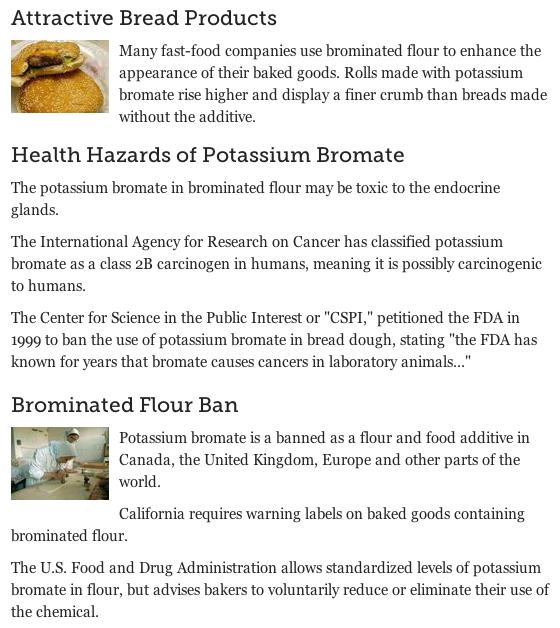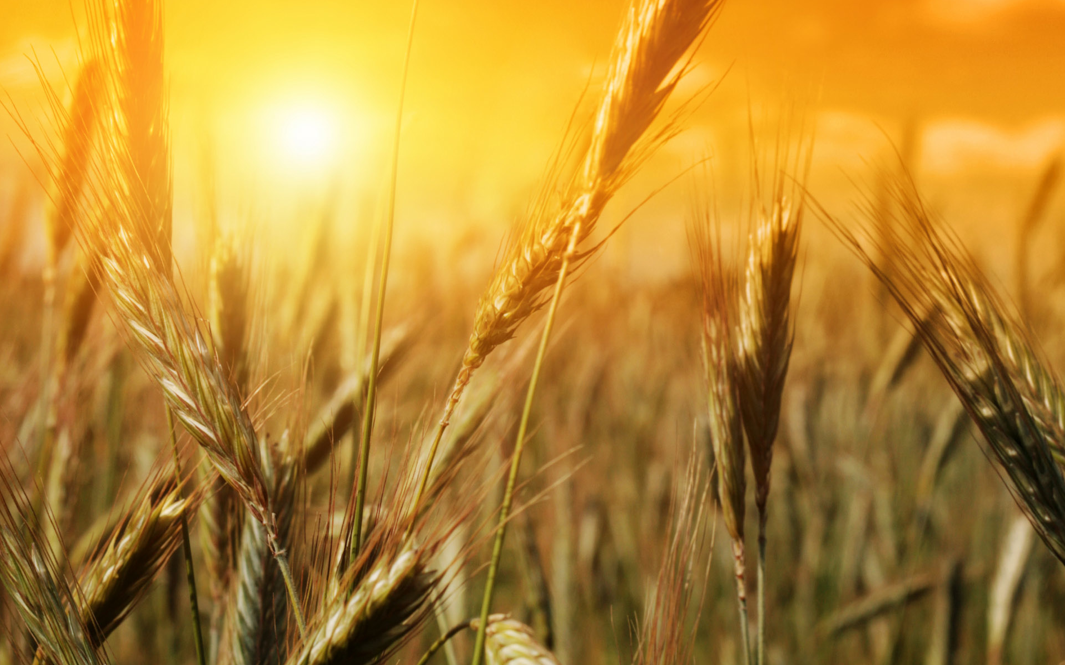That has become the question for every health enthusiast who has been hit with a barrage of conflicting reports about wheat in the diet.
Since we’re dealing with the staff of life, this weighty issue must be reconciled in the minds of all concerned, especially those who are challenged by related medical conditions and health problems.
So, what is the real deal?
Let’s break it down this way for those who are sick and tired because of life-long ingestion of wheat.
If you have been diagnosed with celiac sprue disease, you should positively not eat wheat or any gluten-containg grains. This medical condition requires a life-long prohibition, if one is to escape the ravages of this debilitating disease — celiac.
If you have been diagnosed with gluten sensitivity, you should not eat wheat or the associated grains like barley, rye, oats, etc. Doing so will eventually set you up for celiac sprue disease; that is, if you don’t already have it. The medical diagnostics and laboratory tests for gluten sensitivity are not necessarily conclusive, by the way. Therefore a strong tendency by way of family history toward gluten sensitivity ought to take it out of your diet for life.
If you have been diagnosed with wheat intolerance, then discontinuing wheat in the diet is certainly in order. However, it is important to understand the nuance and subtlety associated with this entire field of diagnosing and remediating gluten/wheat conditions. It is not easy to thoroughly understand because of some complexities which are way beyond the scope of this coaching session.
Hence, we will take up a much more consequential matter which has recently taken the internet by storm.
There are articles, essays, books and videos which assert that eating wheat for anyone is never recommended, and will always produce a negative outcome where it concerns health. This position is the product of an incorrect understanding and highly narrow view of the role of grains in the human diet. Quite frankly, so disturbing is this gross misunderstanding that The Health Coach was compelled to write this piece.
You see, it looks like this. Once upon a time God made wheat for the benefit of humankind. In it’s original environment it was nourishing, fortifying and an integral part of the Ayurvedic food pyramid rightfully taking its deserved place at the base, serving as the foundation of the cultural diet. It has been eaten for thousands of years[1] with great positive effects until a few things happened.
Again, exploring the history of wheat is way beyond the scope of this session, but three critical developments will shed needed light on “what has gone wrong with the wheat”.
I. During the years of ‘creative baking’ throughout the history of Europe in particular, the bakers always tended toward using the more heavily glutenized wheat strains because they were much preferred by the customers. You know, the more chewy and glutinous, the more savory and tasty. This baking technique was eventually utilized in the making of all the breads and rolls, pastas and pizzas, cakes and pies, cookies and tart, etc. So, over the span of centuries, you can imagine how the gluten content of virtually all wheat baked goods continued to rise?
II. With the advent of modern agricultural methods, many chemicals were introduced into the process of farming wheat. In addition to the massive amounts of chemical fertilizers, there were also fungicides, herbicides, insecticides and other imprudent additions* to the soil, wheat crops, as well as the harvested wheat. We all understand what that has done to the original healthy wheat products of yesteryear.
III. Modern food companies (mom & pop bakeries included) have also contributed to this process of wheat degradation through the ways in which factory-produced foods have been furthered denatured, by both the manufacturing process itself as well as with many unnecessary and unhealthy additives (like synthetic vitamins to make it ‘enriched’) systematically added to the mix. Inferior forms of allergy-producing yeast are particularly troubling for many with compromised GI tracts and degraded villi.
Now it’s easy to see that what passes as wheat products today is far different than those of centuries ago. Like soy, which has undergone a similar process of over-hybridization, wheat has been forever tainted to a certain degree.[2]
Back to what this means to you, a wheat eater or wheat abstainer. If your heredity and relevant genetic characteristics are such that their is no predisposition toward celiac sprue in your bloodline, nor any traces of gluten sensitivity or wheat intolerance, you ought to feel secure in the knowing that eating wheat is quite okay and healthful. However there are further qualifications as follows:
Your Ayurvedic body type and Traditional Chinese Medicine profile ought to be favorable for regular wheat ingestion, otherwise ama can build up and chi blocked. Also, if you have certain chronic conditions or a tendency towards mucus production, wheat should be eaten very sparingly since it is a highly mucus-producing grain. The diet can be augmented with other foods, herbs and spices which can effectively counteract the mucus, but special care should be taken when in the throes of a respiratory illness or other mucus-producing conditions.
Also, the tendency toward obesity, diabetes, metabolic syndrome and similar conditions ought to encourage one to decrease one’s wheat intake. This list of qualifications does go on, but for the sake of this discussion let’s end with the following extremely critical point and caveats.
Critical Point:
It is essential that we feel good about our food as we eat it. A positive attitude is key to the way all food and beverage is digested, absorbed and assimilated, and constitutes new tissues. As long as the wheat we eat, assuming you have not been disqualified by your risk profile, medical conditions, overall health status or genetic predispositions, is truly organic and made with positive vibes, it is as healthy a grain as exists on the planet.
In Ayurveda wheat is considered very sattvic, which is especially very good for yogis, meditators, students, artists and philosophers. It serves to raise the subtle vibrations of the body, as well as the entire being, so that transcendental states of consciousness can be experienced more easily.
Final Thought:
We live in a society which has placed wheat at the very top of the list of foods most frequently eaten — in the home, at the fast food counter, the gourmet restaurant, the supermarket, the health food store, the ball game, the wedding reception and funeral gathering, etc. When we attend these functions or visit these places, the question often emerges, “To eat or not to eat the wheat?”
If you choose not to, you probably made the right decision.
If you choose to eat the “delectable wedding cake at the reception”, do so with perfect acceptance, enjoyment and positive feeling toward the sumptuous food you are about to eat.
May you enjoy great health,
The Health Coach
Endnotes:
[1] “Wheat is one of the first cereals known to have been domesticated, and wheat’s ability to self-pollinate greatly facilitated the selection of many distinct domesticated varieties. The archaeological record suggests that this first occurred in the regions known as the Fertile Crescent, and the Nile Delta. These include southeastern parts of Turkey, Lebanon, Syria, the Levant, Israel, Egypt and Ethiopia. Recent findings narrow the first domestication of wheat down to a small region of southeastern Turkey, and domesticated Einkorn wheat at Nevalı Çori—40 miles (64 km) northwest of Gobekli Tepe in Turkey—has been dated to 9,000 B.C. However, evidence for the exploitation of wild barley has been dated to 23,000 B.C. and some say this is also true of pre-domesticated wheat.” (Per Wikipedia — Wheat)
[2] Wheat degeneration and added chemical toxicities have significantly contributed to the the ever-increasing incidence of celiac disease (CSD), gluten sensitivity (GS) and wheat intolerance (WI). For instance, the introduction of mercury into the wheat storage process* alone was in part responsible for overly sensitizing the entire GI tract to many of the other artificial additives, as well as setting it up for various pathological transformations (especially the destruction of the mucus membranes in the small intestine).
*“It used to be common practice across the USA to float mercury vapors from the base of all the huge grain silos in order to control all the “bugs” that fed on the wheat and oats and barley during storage.” (Per Mercury Poisoning and/or Toxicity: Do you have it?)
Why is there such a raging epidemic of GS, CSD and WI?
Two main reasons: (1) The strong digestive capacity, which is required to properly digest a tough protein like gluten, has substantially diminished throughout the modern era, particularly among Americans and Europeans. When the digestive fire is really burning well, it can practically digest nails. (2) We, as a society, simply eat too much wheat. Breakfast, lunch and dinner; morning, noon and night we grab the snack which so often contains wheat. Too much of an inherently good thing can hurt you. Way too much, for way too long, can actually kill you. Especially when any of the previously mentioned incompatibilities become operative.
Personal Testimony:
The Health Coach has submitted himself to a number of lab tests over the years each designed to determine the presence of gluten sensitivity. All of the results have came back negative. However, the bloodline on both sides of the family suggests a very high likelihood of possessing a genetic predisposition for all three — gluten sensitivity, wheat intolerance and celiac sprue disease. So does a childhood fraught with allergies, skin conditions, and other numerous unexplained ailments, many of which remain up to this very day.
It must be pointed out that a strict, multi-year, wheat and gluten-free diet had no effect on the same chronic health conditions? Some of you reading this may have experienced a similar situation. This predicament poses a very significant conundrum which will be taken up in Wheat — Part II
Factoid #1:
Did you know that every child in the country of Italy must be tested for gluten sensitivity by the age of one? It was recognized that celiac sprue disease has taken such a toll on that nation’s healthcare system, that early detection became necessary to stem the tide of celiac-related diseases overwhelming the system.
Factoid #2:
Celiac Sprue Disease has been determined to have causal correlations to almost 200 different other diseases, illnesses and syndromes. Some of these are as serious as Multiple Sclerosis (MS), Systemic lupus erythematosus (aka Lupus), and Amyotrophic lateral sclerosis (aka Lou Gehrig’s disease and ALS).
Caveat:
Beware of any article, research paper or book which rails against the eating of wheat for everyone, all the time, everywhere. To put it bluntly, this type of thinking is highly uninformed and profoundly unenlightened. Furthermore, such ideas are dangerous toward the maintenance of a balanced and physically fit society, particularly in light of how pervasive and invested Western society is in the staple known a wheat.
We mean no offense, but when highly esteemed health professionals and wellness advocates embrace the notion of “No wheat ever, far anyone”, they do a great disservice of engendering unnecessary fear and anxiety, especially for those WHO MAY HAVE NO ALTERNATIVES!
We sincerely hope that we have made ourselves clear in this matter, and offer our email to those beacons of health who would like to carry on a constructive dialogue regarding this extremely important societal health matter. thehealthcoach1@gmail.com
Author’s Note:
For the record, The Health Coach has 8 aunts and a mother who have either died or are dying of celiac sprue disease. His wife, two sisters-in-law, brother-in-law have also been formidably challenged by gluten sensitivity and celiac. There are also several other relatives and numerous friends, business associates, acquaintances who have been likewise diagnosed. That’s not to mention well over 20 years of coaching and counseling hundreds of clients through their formidable celiac sprue challenges.
Health Disclaimer:
All content found at The Health Coach is for information purposes only. Therefore, the information on this website is not a substitute for professional medical care and should not be construed as either medical diagnosis or treatment. All information contained herein ought to be considered within the context of an individual’s overall health status and prescribed treatment plan.
Since The Health Coach does not diagnose, treat, mitigate, cure, or heal any type of disease or medical condition, the information contained at this website is not intended to provide specific physical, mental, emotional or psychological health advice.
It is entirely the reader’s decision to act or not act on any information at The Health Coach. Therefore, we fully invoke the HOLD HARMLESS clause for those who are responsible for putting any of this information into practical use and application.
© 2012 The Health Coach
Permission is granted to post this health blog as long as it is linked back to the following url: https://thehealthcoach1.com/?p=1366




Pingback: Wheat: To eat or not to eat? – Blogsite of Max
Comment send to THC by a reader:
Hello, I wanted to say thanks for the balanced wheat article and tell you about the wheat problem we got rid of.
I used to be allergic to everything, almost literally, and was diagnosed after a very bad abdominal surgery 20 years ago (ulcerative colitis, ruptured appendix, double volvulus, peritonitis) as having a fatal disease of the immune system. I came into the hands of a doctor doing work with a brand-new German bioresonance machine (of course this was not in the US) and was found to have dysbiosis and thus was allergic to everything, especially grain, partly due to this and partly due to long-term PTSD.
The machine brought me back to life over time, I am now healthy and look younger than I am by about 15 years and can eat about anything that is actually food. This made me aware of the role of bacteria, retained toxins, distress, injury and the general condition of the energy field in terms of food intolerance. I am still unable to eat processed fake food even if I wanted to, but that is a plus in my opinion.
I eat wheat often, but mostly things made of flour that I grind myself, where we live I can buy bags of clean wheat at the super. If I eat commercial goods, I might or might not feel bad. I’m sure this is because of additives (or subtractives). Much more damaging than anything to what is left of my intestines is commercial chicken or other meat, a sure sign that the stuff is loaded with chemicals. I abstain religiously…only eat meat under rare circumstances, such as they grew it themselves far from town. Anyway, the food problems are individualistic, one way doesn’t suit everyone equally. I wish more people realized that.
Best regards,
Sue
Here is a 2nd comment from the same reader which may be helpful and inspiring to many:
“I just signed into this account to add that you might really love to read this book (I call it the Bible of energy work) about the machines:
Bioresonance & Multiresonance Therapy (Brt: New, Forward-Looking Forms of Therapy With Ultrafine Body Energies & Environmental Signals.) Documentation
Hans Brugemann, Robert E. Williams
Sold by: sablevision (seller profile )
It’s out of print, but there are a few places round about still selling it. I sent this one to someone a few months ago from amazon.com, full of practice and theory. Look for other sellers, there’s one in Canada, but $50 is about the same price I paid 15 years ago.
Here is a link to the company: http://www.bicom2000.com/
Last I checked, they were legalized in the US a few years ago for use on horses and dogs, lol. Prior to that the FDA was seizing any found in the hands of people doctors. I had my treatments in Africa where you can get what you need if you know where. I also had basic Upledger work, Bach remedies, and anything else I could find including astrology and other lifetime work. Later on for 5 years in the States I only had energy treatment from some of Barbara Brennan’s early students, vitamins, and most recently advice from Dr. H Clark’s books. I have a zapper, though I rarely use it.
Now, overseas again permanently, I have a large homeopathic pharmacy in the closet and use counterstrain to keep the muscle problems down. More Upledger work (SER) solved most of the physical component still left. Liver flushes, clay, no sweets, no cosmetics (wash hair with soap and vinegar or clay, for example), laundry done only with a box of baking soda, dishes washed with olive oil soap, I keep alive. Maintenance isn’t hard, but getting to neutral was a journey.
If I had the whole sequence to do over as a protocol, I would start with the Upledger work done by a very skilled and medically trained practitioner along with the Brennan healing method to provide full-spectrum physical to high spiritual coverage, do the liver flushes and clay and no detergent/cosmetic rule at the same time, then move to the Bicom machine for diagnosis of remaining problems, parasite kills, toxin flushing, and exact fine-tuning of all fields, then for occasional maintenance, along with homeopathics and occasional cranio-sacral adjustments.
I had a lot of acupuncture in the 1990s, but it doesn’t last. I also used supplements for survival years ago, but rarely use any now, since I don’t think they can be trusted for any but emergency use. I take Bcomp or C or A only when I am sure there is nothing else I know how to do to get the needed effect quickly. Castenada’s Tensegrity exercises are good, too, for people who don’t like yoga teachers or martial arts.”
Sue